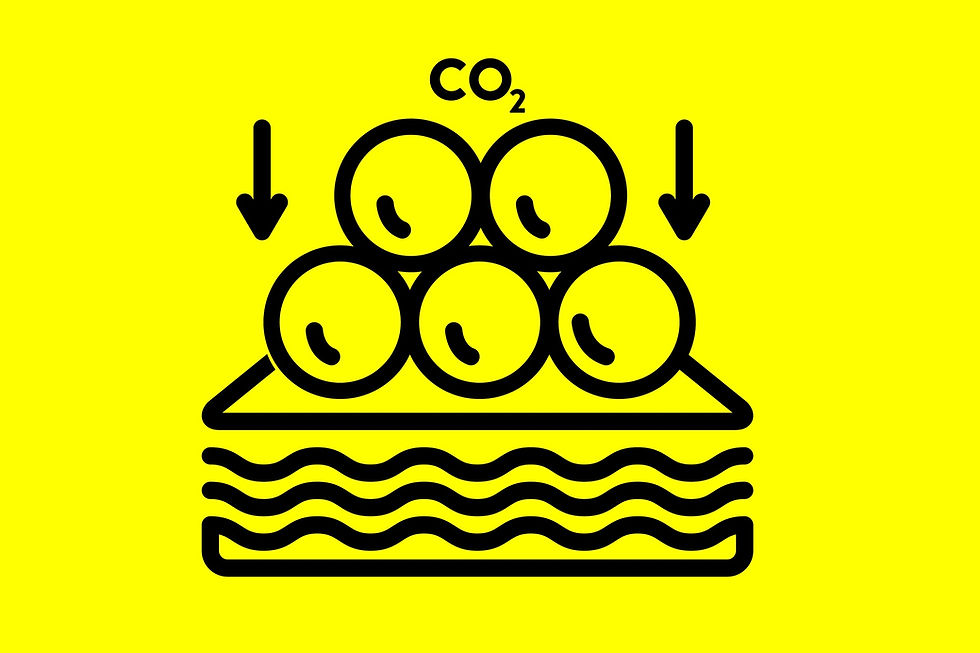Experts say carbon capture, sequestration is not just for power plants anymore
- Esther Wieldon, S&P Intelligence
- Oct 1, 2019
- 3 min read
Carbon capture and storage is often associated with harnessing fossil fuel-related power plant emissions. But certain experts and scientists have also suggested carbon capture and storage, or CCS, technology will be key to curbing emissions from the very industrial sectors the world largely will rely on to build a low-carbon infrastructure.
"Industrial emissions remain the world's blind spot," David Livingston of the Atlantic Council Global Energy Center said at a Sept. 24 Global CCS Institute event in New York City.
The Intergovernmental Panel on Climate Change in 2018 indicated that carbon capture and sequestration "plays a major role in decarbonizing the industry sector in the context of 1.5 degrees Celsius and 2-degree pathways, especially in industries with higher process emissions, such as cement, iron and steel."
Of global energy-related annual emissions, cement accounts for about 7% and the iron and steel industry together comprise another 7%, according to a 2018 report by the Energy Transitions Commission, which is funded by the United Nations Foundation, European Climate Foundation, a number of energy companies and other groups.
While tweaking the processing and ingredients used in industrial products can lower emissions, panelists noted the industrial sector generally remains among the toughest nuts to crack. For starters, some industrial applications need fossil fuels to achieve extremely high temperatures that cannot be accomplished through electricity-related or solar panel heating applications, said Andrew Prag, head of environment and climate change at the International Energy Agency.
In addition, about 25% of all industrial emissions come from the chemical reactions that occur in making the materials, particularly when it comes to cement, he said. Moreover, he explained funding for low-carbon innovation in those sectors is hard to come by and industrial sectors are traditionally slow to change.
CCS technologies also suffer from a general lack of public support, said World Resources Institute Global Energy Program Director Jennifer Layke. Environmental groups, for example, often believe that CCS "has been used as a way to avoid moving out of fossil fuels as rapidly as required" to tackle climate change, Layke said.
But Melanie Kenderdine, principal of the Energy Futures Initiative, insisted that CCS will be key for tackling climate change-related emissions from both the industrial and energy sectors. Developing countries in Africa as well as India are looking to expand access to electricity and will likely do it through natural gas or coal-fired generation, she said. "We're going to need to capture the carbon from those generation facilities as well if we're going to address the climate-change issues that I think are urgent."
Members of the Oil and Gas Climate Initiative, a group backed by 13 of the biggest oil and gas companies in the world, recently pledged to grow carbon capture investments and reiterated their support for policies that place a price on carbon. The group has also taken aim at helping to tackle industrial emissions.
The initiative announced a KickStarter initiative aimed at decarbonizing multiple industrial hubs in the U.S., UK, Norway, the Netherlands, and China, with the goal of doubling the amount of carbon dioxide that is currently stored globally before 2030. Royal Dutch Shell PLC and Equinor ASA are among initiative members that are already working on industrial CCS projects.
In addition to the oil and gas companies, one of India's largest cement companies is planning to do more than curb all of its emissions. Mahendra Singhi, CEO of Dalmia Cement (Bharat) Ltd. during the United Nation's Climate Action Summit on Sept. 23 described the company's recent announcement to become carbon negative by 2040, largely through CCS.













![Forbes: By The Numbers: How Carbon Capture Could Contribute To Decarbonization [Infographic]](https://static.wixstatic.com/media/b1f434_4c5886814df347b18328e6cd5ca4c401~mv2.jpg/v1/fill/w_452,h_250,fp_0.50_0.50,q_30,blur_30,enc_avif,quality_auto/b1f434_4c5886814df347b18328e6cd5ca4c401~mv2.webp)
![Forbes: By The Numbers: How Carbon Capture Could Contribute To Decarbonization [Infographic]](https://static.wixstatic.com/media/b1f434_4c5886814df347b18328e6cd5ca4c401~mv2.jpg/v1/fill/w_38,h_21,fp_0.50_0.50,q_90,enc_avif,quality_auto/b1f434_4c5886814df347b18328e6cd5ca4c401~mv2.webp)



















Comments